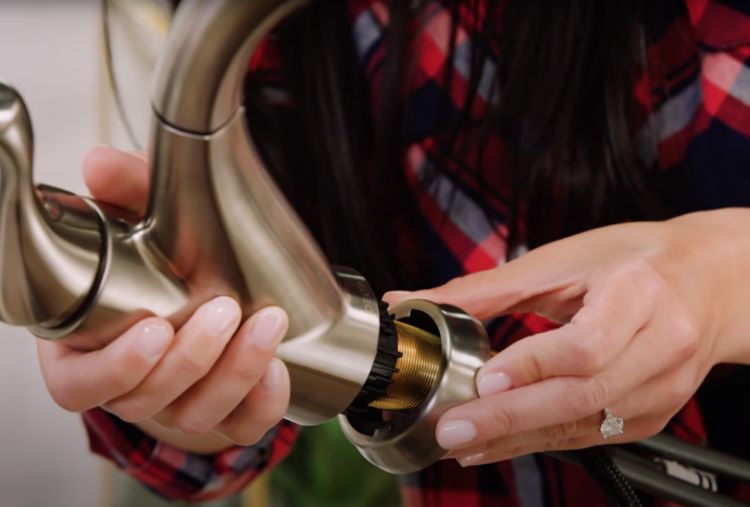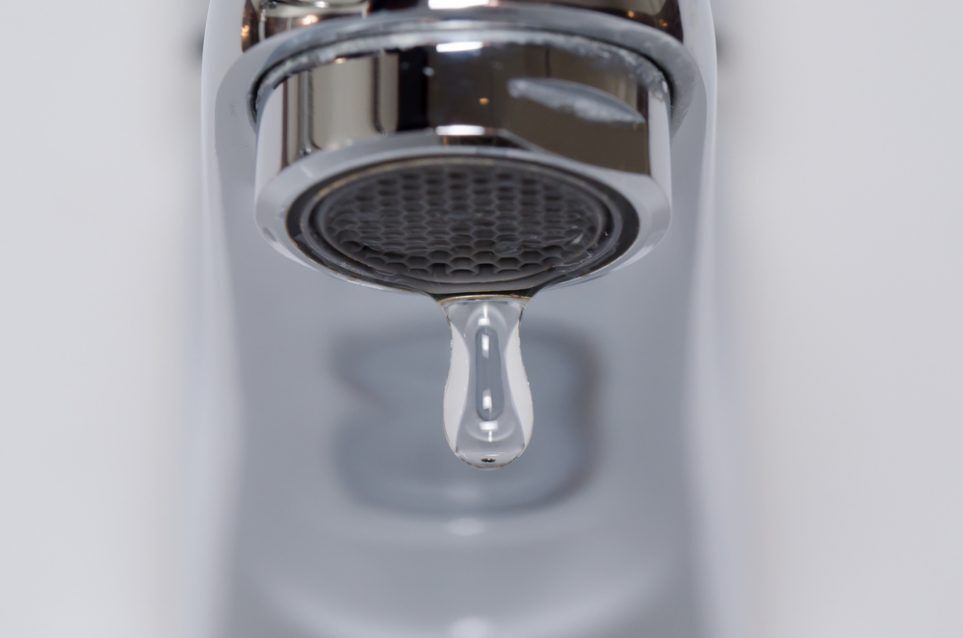Motives Why It's Crucial to Mend a Malfunctioning Faucet
Motives Why It's Crucial to Mend a Malfunctioning Faucet
Blog Article
Just how do you feel in relation to Why Is It Important To Fix Your Leaking Tap/Faucet??

Trickling faucets might appear like a small aggravation, but their impact surpasses simply the annoyance of the sound. From drainage to sustaining unneeded monetary expenses and health and wellness dangers, overlooking a dripping faucet can cause various repercussions. In this article, we'll look into why it's critical to resolve this common house problem quickly and properly.
Wastage of Water
Ecological Influence
Leaking faucets add considerably to water wastage. According to the Environmental Protection Agency (EPA), a solitary faucet dripping at one drip per second can squander more than 3,000 gallons of water each year. This not only stress water sources yet also influences ecological communities and wild animals dependent on them.
Step-by-Step Guide to Repairing a Dripping Faucet
Tools Needed
Before attempting to repair a dripping faucet, collect the essential devices, consisting of a flexible wrench, screwdrivers, replacement parts (such as washers or cartridges), and plumber's tape.
Usual Tap Issues and Their Solutions
Determine the sort of faucet and the certain concern causing the drip. Common problems consist of damaged washers, corroded valve seats, or faulty O-rings. Describe producer directions or on-line tutorials for step-by-step guidance on repair services.
Financial Prices
Enhanced Water Expenses
Beyond the ecological effect, trickling taps can blow up water bills substantially. The accumulated wastefulness over time translates right into greater utility costs, which could have been avoided with timely repairs.
Prospective Residential Property Damages
In addition, extended leaking can cause harm to components and surfaces surrounding the faucet. Water accumulation can cause staining, corrosion, and also architectural issues if left ignored, resulting in additional repair service prices.
Wellness Worries
Mold And Mildew and Mold Development
The consistent existence of wetness from a dripping faucet produces a perfect setting for mold and mildew and mold growth. These fungis not only compromise indoor air high quality yet likewise present health and wellness threats, specifically for individuals with respiratory conditions or allergic reactions.
Waterborne Conditions
Stationary water in dripping faucets can become a breeding ground for germs and other microorganisms, increasing the risk of waterborne diseases. Contaminants such as Legionella microorganisms thrive in stagnant water, possibly resulting in significant illnesses when ingested or inhaled.
DIY vs. Professional Fixing
Pros and Cons of DIY Repair Work
While some might try to take care of a trickling faucet themselves, do it yourself repair services include their own collection of challenges. Without appropriate knowledge and tools, do it yourself efforts can worsen the problem or result in insufficient repair services, lengthening the trouble.
Advantages of Employing an Expert Plumber
Working with an expert plumber makes sure that the underlying reason for the dripping tap is dealt with effectively. Plumbings possess the competence and devices to detect and repair faucet problems effectively, saving time and lessening the threat of additional damage.
Environmental Obligation
Private Contribution to Conservation
Taking responsibility for repairing dripping taps straightens with more comprehensive initiatives toward water preservation and ecological sustainability. Every individual's actions collectively make a considerable influence on maintaining valuable sources.
Lasting Living Practices
By prioritizing timely repair work and embracing water-saving routines, individuals add to sustainable living methods that profit both existing and future generations.
Safety nets
Normal Maintenance Tips
To avoid dripping taps, perform routine maintenance such as cleansing aerators, examining for leaks, and changing damaged parts quickly. Additionally, consider mounting water-saving devices or upgrading to much more effective components.
Relevance of Prompt Repairs
Resolving trickling taps as quickly as they're seen prevents further water wastage and possible damages, ultimately conserving both water and money over time.
Influence On Property Value
Assumption of Well-Maintained Property
Preserving a residential or commercial property in good condition, consisting of dealing with maintenance concerns like trickling faucets, boosts its viewed value and charm amongst prospective customers or tenants.
Impact on Resale Value
Qualities with well-kept plumbing fixtures, including faucets, command greater resale worths in the realty market. Dealing with dripping faucets can add to a positive impression throughout property inspections and arrangements.
Final thought
Dealing with a dripping faucet surpasses mere comfort; it's a necessary step towards conserving water, minimizing economic costs, and securing health and property. Whether with do it yourself repair work or expert support, taking action to fix dripping taps is a small yet impactful means to advertise responsible stewardship of resources and add to a much healthier, extra lasting future.
How to Fix a Leaky Faucet: Step-by-Step Repair Guide
A leaky faucet may seem like a simple annoyance, but if it's not fixed promptly, that leak could cost hundreds to potentially thousands. From water damage to mold, mildew, and high water bills, even a tiny leak can be catastrophic if left unattended. Damage like this can even affect the overall value of your home, so it's important to take the right approach for leaky faucet repair. You may need the help of a plumber in some cases, but we've got a few tips you can try on how to fix a leaky faucet before calling the pros.
Four Faucet Types
When you're learning how to fix a leaky faucet, the first step is knowing what kind of faucet you're working with! There are four common types.
Cartridge Faucets
Cartridge faucets come in one- or two-handled varieties. In one-handled cartridge faucets, hot and cold water combines in a single cartridge. In the two-handled versions, hot and cold water are controlled separately and mixed in the faucet.
Ball Faucets
Ball faucets have a single lever you push up and down to adjust the pressure and rotate to change the temperature. A slotted metal ball controls the amount of water allowed into the spout.
Compression Washer Faucets
They're the oldest type of faucet, but they're still used in many homes — especially older ones. Compression faucets have two separate handles that, when turned, raise or lower the washer that seals a water valve. This valve stops water from flowing through the faucet when it is turned off.
Disc Faucets
Disc faucets rarely need to be repaired due to their maintenance-free design. The water flow is controlled by two discs — the upper one raises and lowers against a fixed lower disc, creating a watertight seal. If your disc faucet starts leaking, you may need to replace the seals or clean residue buildup from the inlets.
Fixing a Leaky Faucet
Step 1: Turn Off the Water
Whether you're learning how to fix a leaky bathtub faucet or how to fix a leaky kitchen faucet, always turn off the water supply to your working area when you're fixing a leak. The last thing you want is a flood added to your list of things to fix.
Look for the shutoff valves below your sink or around the tub and turn them clockwise to stop the water flow. If your faucet doesn't have shutoff valves, you may need to turn off the water for the whole house. Check to make sure it's off by turning the faucet on. If nothing comes out, you're ready to start the repair.
Step 2: Take Apart the Faucet
How you disassemble your faucet depends on the type of fixture you have. You can use a flathead screwdriver to remove the caps on top of the handle or handles for cartridge and compression faucets. Inside, you should see handle screws. Unscrew these with a screwdriver to remove the handle.
Disc- and ball-style faucets will typically have an inlet screw near the handle, and removing that will reveal the interior of the faucet.
Detach the Valve Stem
For cartridge- and compression-style faucets, you'll see the inner valve stem or cartridge once you remove the faucet handles. If you have a compression faucet, unscrew the brass valve stem. If you have a cartridge faucet, pull out the cartridge. If your cartridge has been in place for a while, it may require some tools or extra force to remove it due to mineral deposits.
Examine and Replace Parts
Once you've removed the parts, check them out to confirm what needs to be replaced. You may see corroded rubber washers, O-rings, stems, or cartridges. On a ball-style faucet, check the seats and springs for damage.
If you need to repair a leaky disc faucet, check the inlet and seals on the lower disc.
Once you determine what parts must be replaced, visit your local hardware store. Bring the damaged parts with you to ensure you can purchase the correct components to replace them.
Clean Valves and Faucet Cavity
If you've removed a stem or cartridge, you may notice mineral buildup in the faucet's threads. Use white vinegar to clean the valve seat by soaking it for a few minutes, then scrub it away with a soft toothbrush and rinse with warm water. You can also clean the interior of the faucet in the same way.
Reassemble the Faucet
Once your faucet is cleaned and the required parts have been replaced, it's time to reassemble it. Put the pieces back together and slowly turn the water supply back on. Doing this slowly is crucial because too much initial water pressure can damage the new hardware you've just installed.
https://homewarranty.firstam.com/blog/how-to-fix-leaky-faucet

I ran across that review on Should I Repair or Replace a Leaky Faucet? when browsing the internet. Sharing is good. One never knows, you will be doing someone a favor. I cherish your readership.
Report this page